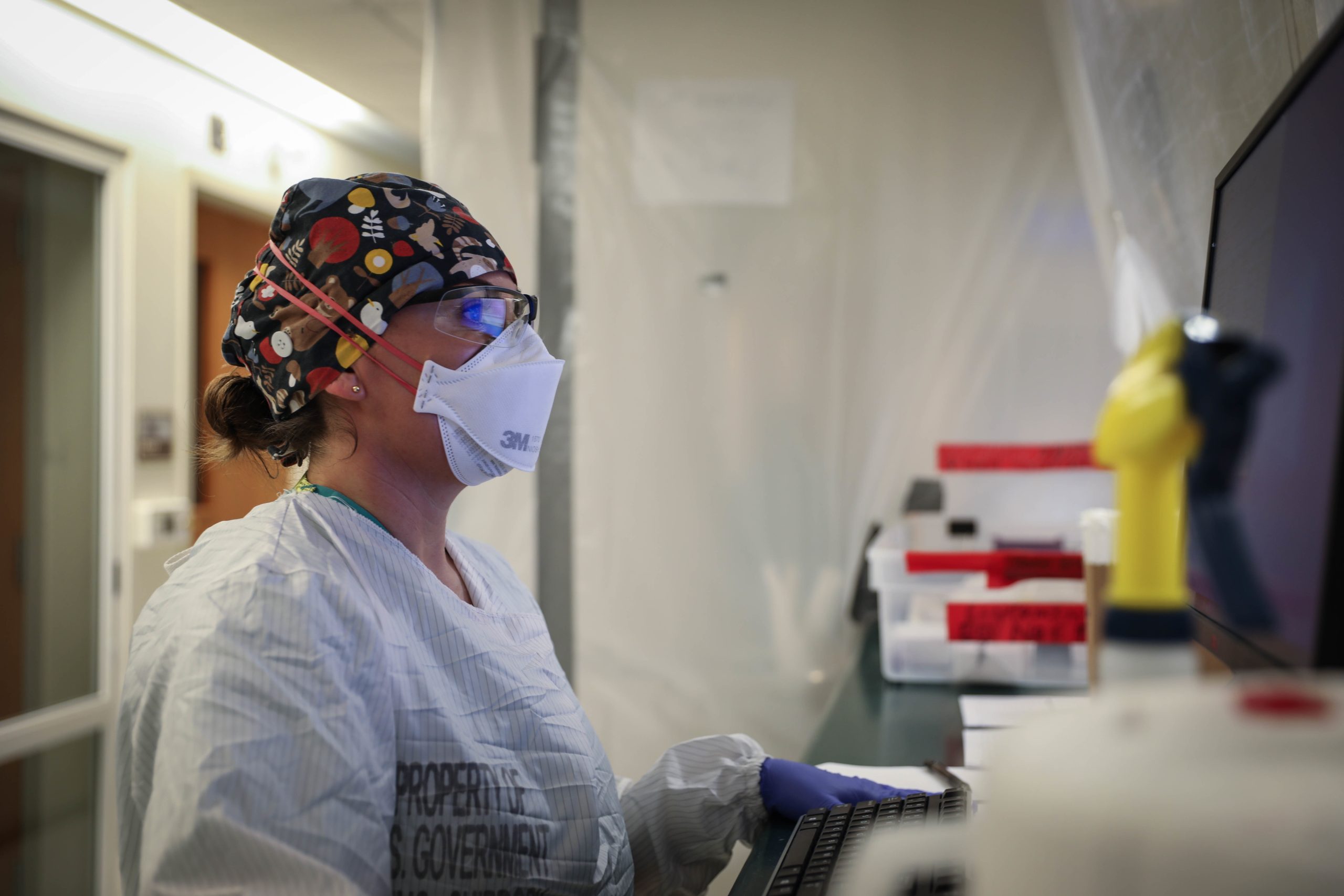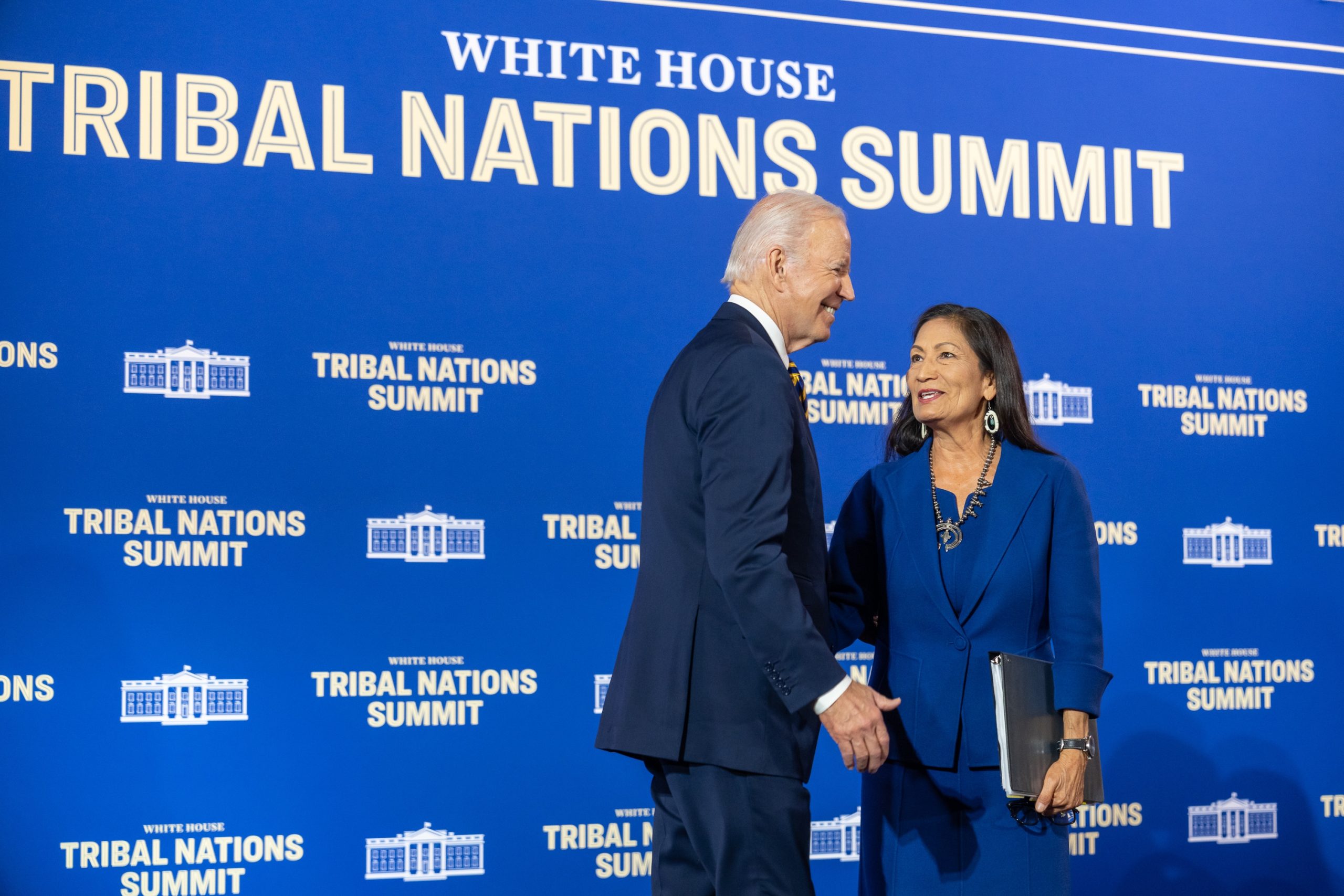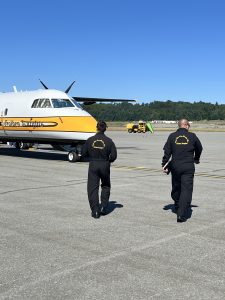Podcast: Play in new window | Download | Embed
Navajo Nation President Buu Nygren says Gov. Katie Hobbs (D-AZ) has persuaded Energy Fuels Resources to halt shipments of uranium ore until the Navajo Nation and the company hold discussions.
This comes after shipments traveled through the Navajo Nation this week, which Nygren condemned saying they were unauthorized.
As KSJD’s Clark Adomaitis reports, the Navajo Nation continues to struggle with a legacy of uranium extraction on the reservation.
The trucks started from the Pinyon Plain uranium mine just south of Grand Canyon Village in Arizona and headed to a uranium mill in southeast Utah.
“Once they enter the boundaries of the Navajo Nation, they’re on Navajo land, they need to follow Navajo law.”
President of the Navajo Nation Buu Nygren says Navajo police tried to pull over two trucks, but they didn’t get to the drivers until after they left the tribe’s jurisdiction.
“They snuck through the Navajo Nation, and they made it into the Utah side of the outside of the reservation…so to me, they operated covertly to traverse the Navajo Nation illegally.”
Curtis Moore, Vice President of Marketing at Energy Fuels, says there’s a lot of uranium to transport from the Pinyon Plain mine to the White Mesa Uranium Mill.
“There’s going to be six to eight trucks per day for a few years…it’s all, regulated by the US Department of Transportation standards…I would estimate it’s gonna operate for five to seven or eight years of ore production.”
From the 1940s to the 1960s, the US government took advantage of the uranium-rich Four Corners area for Cold War weapons production.
But outdated practices left decrepit mines scattered throughout the Navajo Nation.
And the mines have never been cleaned up, exposing residents to harmful radiation.
Today, the White Mesa Uranium Mill, run by Energy Fuels, is the only conventionally-operating uranium mill in the United States.
According to US Law, Energy Fuels is allowed to truck low-grade radioactive material on state and federal roads.
But the Navajo Nation has had a law in place since 2012 banning the transport of uranium on the reservation.

(Courtesy Ashley Callingbull / Facebook)
Ashley Callingbull has become the first Indigenous woman to win Miss Universe Canada.
As Dan Karpenchuk reports, the 34-year-old model and actress is from the Enoch Cree Nation in Alberta.
Callingbull is also an in-game host for the National Hockey League, the Canadian Football League, and the National Lacrosse League – and she has received awards for her community work and activism.
Callingbull became the first Canadian and Indigenous person to win Mrs. Universe in 2015 and in 2022 the first Indigenous woman to appear as a model for Sports Illustrated.
But in a recent interview with the CBC, she said breaking down barriers and misconceptions wasn’t easy and she had to fight to get where she is now as a model.
“We’re not the normal standard. And I’ve been told that since the very beginning of my modelling career, when I started when I was 18. It’s that you know, girls don’t have this Native nose and this bump. Girls don’t look like this…they’re not dark skinned, they don’t have dark hair.”
In a social media post, Callingbull wrote that she’s been chasing the dream of the Miss Universe contest for years and she can’t believe that it has come true.
But she adds that representation matters because when one of us wins, we all win.
“And now you know, I’m going into this when I’m not the only Indigenous woman. Yes, we’ve made our mark. We’re letting people know that we’re still here and we’re rising and we’re stronger that you can ever believe.”
As Canada’s contestant, she will compete for the Miss Universe title in Mexico in November.
Get National Native News delivered to your inbox daily and stay up-to-date on the 2024 Native Vote. Sign up for our daily newsletter today.









 A new book being released by Medicine Wheel Publishing, marks Orange Shirt Day, which raises awareness about residential schools in Canada.
A new book being released by Medicine Wheel Publishing, marks Orange Shirt Day, which raises awareness about residential schools in Canada.

 Native leaders say most noteworthy is his pick of Deb Haaland (Laguna Pueblo) as the Secretary of the Interior.
Native leaders say most noteworthy is his pick of Deb Haaland (Laguna Pueblo) as the Secretary of the Interior.


